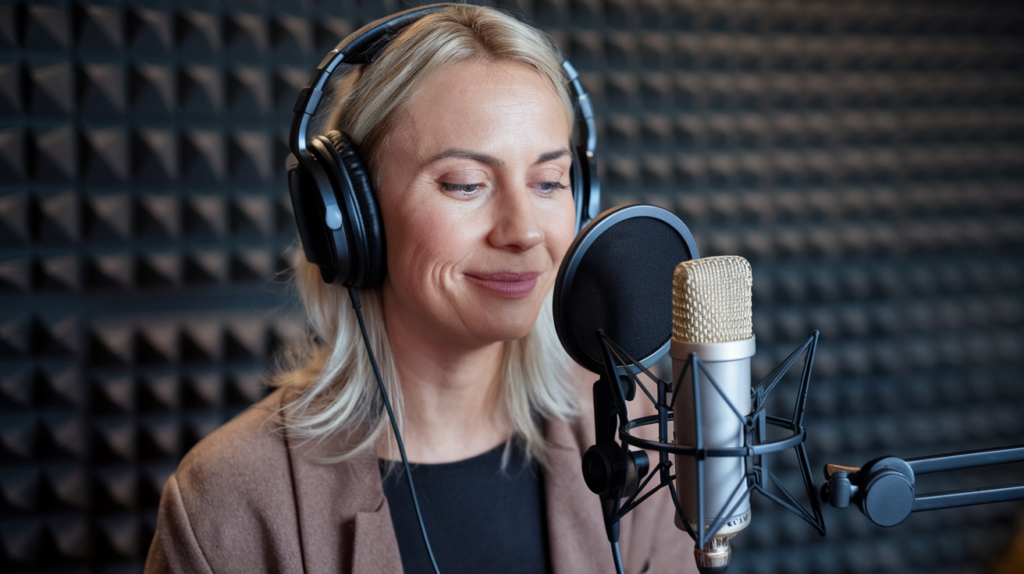Key Takeaways
- Importance of Lip Sync: Accurate lip sync enhances immersion, making the viewing experience seamless and enjoyable for audiences.
- Audience Connection: Effective lip sync fosters emotional engagement, allowing viewers to relate better to characters and narratives without distractions.
- Storytelling Enhancement: Properly synced voiceovers reinforce character authenticity and amplify emotions, enriching narrative depth and overall storytelling impact.
- Techniques for Precision: Implementing audio timing adjustments and visual synchronization methods are essential for achieving precise lip sync in Russian dubbing projects.
- Challenges Addressed: Navigating cultural nuances and linguistic differences is crucial in overcoming challenges that impact lip sync quality during the dubbing process.
- Technological Advances: Utilizing advanced software solutions and AI technologies can significantly improve lip sync accuracy, enhancing both production efficiency and viewer engagement.
Ever watched a Russian dubbed film and cringed at the lip sync? You’re not alone! Ensuring lip sync in Russian dubbing isn’t just about translating words; it’s about creating an authentic experience that resonates with viewers. When voices don’t match the on-screen action, it can pull you right out of the story.
Importance Of Lip Sync In Dubbing
Lip sync plays a crucial role in the effectiveness of dubbing. Achieving accurate lip synchronization enhances immersion, making the viewing experience seamless and enjoyable.
Impact On Audience Experience
Effective lip sync directly influences how audiences connect with content. When voices match the characters’ mouth movements, viewers can focus on the story instead of being distracted by mismatched audio. This alignment fosters emotional engagement, allowing audiences to relate better to characters and narratives. A well-executed voiceover not only maintains attention but also enriches understanding, leading to a more satisfying overall experience.
Contribution To Storytelling
Lip sync significantly contributes to storytelling by reinforcing character authenticity. When the dialogue aligns with visual action, it creates a believable world that resonates with viewers. Voice actors bring characters to life through their performances; if their timing and delivery are off, it can undermine plot nuances and character development. Properly synced voiceovers amplify emotions portrayed on screen—whether it’s joy, sadness, or tension—and enhance narrative depth. This synergy between voice talent and visuals cultivates an impactful storytelling experience that captivates audiences from start to finish.
Techniques For Ensuring Lip Sync
Achieving precise lip sync in Russian dubbing involves a blend of technical skills and artistic intuition. Here are several techniques that can elevate the quality of your dubbed content.
Audio Timing Adjustments
Audio timing adjustments play a vital role in ensuring that voiceovers seamlessly match the on-screen dialogue. You can achieve this by:
- Aligning dialogue with visual cues: Start by identifying key moments in the footage, like character mouth movements or emotional expressions. Adjust the timing of the voiceover to coincide perfectly with these cues.
- Editing pauses and pacing: Sometimes, natural speech patterns differ across languages. Modify pauses or speed up certain lines to fit within the visual context without losing meaning.
- Utilizing software tools: Modern audio editing software allows you to manipulate audio tracks easily. Use features like time-stretching or pitch correction to refine delivery while maintaining clarity and emotion.
Visual Synchronization Methods
Visual synchronization methods enhance the connection between voiceovers and characters’ actions. To ensure effective syncing, consider these strategies:
- Character analysis: Understand each character’s personality traits and vocal characteristics before recording. This knowledge helps voice actors deliver performances that resonate with their animated counterparts.
- Mouth movement tracking: Observe how characters articulate their lines visually. Matching your voice actor’s delivery style with these movements fosters an authentic experience for viewers.
- Recording sessions with reference video: Provide your voice talent access to reference videos during recording sessions. This approach helps them capture nuances in performance that align closely with on-screen action.
By implementing these techniques, you enhance not just lip sync accuracy but also overall audience engagement, allowing viewers to immerse themselves fully in the story being told.
Challenges In Russian Dubbing
Achieving proper lip sync in Russian dubbing presents several challenges that can impact the overall quality of the production. These hurdles often arise from the unique aspects of language and culture that must be navigated during the dubbing process.
Cultural Nuances
Cultural nuances play a significant role in effective voiceovers. Different cultures interpret emotions, humor, and expressions uniquely, which influences how dialogue is delivered. When adapting scripts for Russian audiences, it’s crucial to consider local references and idioms. An accurate translation might not resonate with viewers if it lacks cultural context. Voice actors must embody these subtleties to ensure their performances feel authentic and relatable.
Linguistic Differences
Linguistic differences between languages can complicate lip sync efforts as well. Russian syntax, for instance, often requires longer phrases compared to English or other languages. This discrepancy can lead to timing issues when aligning spoken words with on-screen actions. Additionally, vowel sounds and consonant clusters may vary significantly between languages, affecting mouth movements during delivery. Voice artists need to be aware of these linguistic elements while recording to create seamless synchronization that maintains viewer engagement.
By addressing these challenges head-on through careful planning and skilled execution, you enhance the effectiveness of your dubbed content and foster a deeper connection with your audience.
Tools And Technologies
Achieving precise lip sync in Russian dubbing relies on various tools and technologies that enhance the quality of voiceovers. These resources streamline the process, ensuring a seamless connection between dialogue and visual elements.
Software Solutions
Numerous software solutions exist to facilitate lip sync accuracy. Digital audio workstations (DAWs) like Pro Tools or Adobe Audition provide advanced editing capabilities for aligning voiceover recordings with visual cues. Tools such as Avid Media Composer offer comprehensive features for video editing and synchronization, helping you fine-tune timing to create a polished final product. Furthermore, specialized lip sync software like Synchro Arts’ VocAlign can automatically adjust dialogue tracks to match character mouth movements, saving time while maintaining quality.
Advances In AI And Machine Learning
Recent advances in AI and machine learning are revolutionizing the field of dubbing. Algorithms can analyze video content to identify speech patterns and predict optimal timing adjustments for voiceovers. This technology enhances the accuracy of lip sync by providing real-time feedback during the recording process. Additionally, machine learning models can help evaluate different performances from various voice actors, allowing you to choose the best fit for your project based on emotional delivery and alignment with character actions.
Leveraging these tools not only improves lip sync but also elevates the overall viewing experience, making it more engaging for your audience.
Conclusion
Achieving precise lip sync in Russian dubbing is essential for creating an immersive viewing experience. By employing effective techniques and leveraging advanced tools, you can enhance the connection between voiceovers and on-screen action. This not only reinforces character authenticity but also deepens emotional engagement with the story.
Navigating cultural nuances and linguistic differences plays a crucial role in achieving this goal. With proper planning and execution, you can elevate the quality of dubbed content and foster a stronger bond with your audience. Ultimately, mastering lip sync contributes significantly to impactful storytelling that captivates viewers from beginning to end.
Frequently Asked Questions
What is the importance of lip sync in Russian dubbing?
Proper lip sync in Russian dubbing is crucial for viewer immersion. Mismatched audio can distract audiences from the story, reducing emotional engagement and understanding. Effective lip sync aligns dialogue with on-screen actions, enhancing authenticity and creating a believable world that captivates viewers.
What challenges are faced in achieving proper lip sync for Russian dubbing?
Challenges include cultural nuances and linguistic differences inherent to the Russian language. These factors complicate timing and script adaptation, as voice artists must ensure that translated phrases match character mouth movements while maintaining emotional resonance.
What techniques help improve lip sync accuracy in Russian dubbing?
Techniques like audio timing adjustments align dialogue with visual cues, while editing pauses fit natural speech patterns. Visual synchronization methods such as character analysis and tracking mouth movements also enhance connection between voiceovers and characters’ actions.
What tools are used to achieve precise lip sync in dubbing?
Tools include digital audio workstations (DAWs) like Pro Tools and Adobe Audition for advanced editing. Specialized software such as Synchro Arts’ VocAlign helps automatically adjust dialogue tracks to match mouth movements, while AI technologies analyze video content for optimal timing adjustments.
How does technology impact the quality of dubbed content?
Recent advances in AI and machine learning significantly improve dubbed content quality by analyzing speech patterns and providing real-time feedback during recording sessions. This ensures better alignment of voiceovers with character actions, enhancing overall audience engagement.







